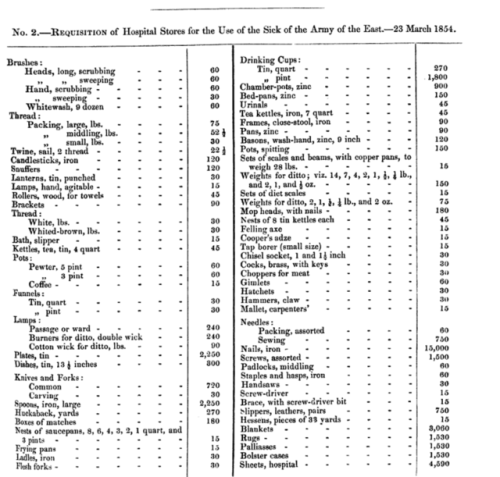#materialism
The most pertinent astrological event of our time is the once-every-two-centuries procession of the elements in the Jupiter-Saturn synodic cycle. In December 2020, we are moving from an earth age to an air age. I will be cataloguing reflections and predictions, as well as amplifications of the elements and their zodiacal signs.

Food is the Reward
We say that Venus, ruler of taurus and libra, governs ethics and aesthetics. Ethics is the more immaterial, and best represented by libra, the air sign. Aesthetics is concrete, and best represented by taurus, the earth sign. Taurus is the sign of food, values, and art. We talk about tasting food and having taste in art. Taste in art is essentially a measure of appropriateness, and so are our values. “[Something], in what measure?” A tone of voice, a texture, a shape or color. Recall, taurus also rules money. Wealth in what measure? What results in pleasure.
What is this association between the material and value? Why does something hold more value if it is objective and physical?
Tina Fey once said something very wise: that the only real reward is food. When you are celebrating a success, the feeling is cemented by food. Regardless of scale. Finished fixing a pipe at home? Have a nice lunch. Successfully stage the opening night of your epic opera? Go out to dinner. The act of consumption is tied to the success of the deed, this is especially obvious on the occasion of a toast. Not only does the food tether the success around it, but it binds together the people who are sharing in it. We see that food is not only a consolidated symbol of value, but that it also concentrates the group into a set of values. Thus food is a bedrock of tribal life and tribalism. How offended is the tribe when you refuse to eat with them, or in their manner?
The word “binding” means three things: attaching, reinforcing and restricting. Tribal life is restricted by convention, but the affixing of concrete images and values to the symbolic order of the tribe fortifies its strength by providing it new organs, new capacities. In alchemical psychology, the stage of “coagulation” is all about the affixing of images, and closely relates to the process of personification. When a psychological complex is given an image—or better yet, personified—it is far easier to deal with. But the carrying around of an image that has been outgrown is, of course, restrictive. So images must not be permanent. Our bodies too are images, and they are beautiful and valuable because they die.
The attachment to our bodies is very important for life. If we did not care about our bodies and find them beautiful we would die much faster. “Let your wicked desires keep you pinned to this earth so your work could go on,” wrote Jung to his suicidal friend. Desire keeps us in life, and the desire of all the beings within us keep the body together. The countless microorganisms within do not have minds, but they have wants.
Dissolution Under Analysis
Supposing that there is a mesh of matter underlying the various objects of the world. After all, bodies die and buildings fall to rubble and then to dust. So if we think about matter as a whole, without its temporary approximate forms, it certainly is a diffuse mesh, a matrix. Then the cohering of that mesh into one of these forms is a desire.
Consider also the process of logic, which must operate upon abstractions that have been crystallized into units. Set theory, for instance, deals with the abstraction of set, drawn into coherence by its categorization as a set. Each member of a set is also itself a set. It is sets all the way up and down. So it is the bundling of axioms, the coagulation of the set, that makes it all operable.
An Amp for Christ
When Christ came to earth, he vitiated the magical projections of animism. The spirits of nature withdrew from the rocks and trees. This is the root of the opposition between Christianity and paganism. The keynote here is that Christ did this by taking these projections upon himself—he sheathed himself in the symbols of the world. This was an axial moment in the development of consciousness, where people realized they could find all the spirits of the world inside themselves. Here psyche could make an integral step in its pivot to self-reflection. We don’t know what the world appeared like preceding or directly after this event, but we might imagine that the world of matter suddenly appeared much more real and substantial.
And he said something about how he was the living bread, and from then on people have been eating his body in the form of the Eucharist. Is this part of his great deed, to make explicit the bundling of values that goes into a physical object? And that the consumption of the physical object brings with it an isomorphic psychological change?

We Want Stuff
The Industrial Age, the age of earth, came after the Enlightenment, the age of fire. And it is clear how science and reason set the stage for all the marvelous technology of industry. The achievements of the Enlightenment were very exciting, but somewhat abstract, and so did not look like much. It is the movement from age to age, from principle to machine, that gave us something to look at.
Then with this new industrial speed, we had so much to look at. We have now a lot of stuff. Without effort, I can get a mug with anything I want on it and in it. So many, many objects.
As stated, matter is energy drawn into form by desire and objects are therefore crystalizations of desire. So we desire objects. And we want them because they radiate their energy, their love upon us. A statue painstakingly carved from marble can sit in one’s home for a very long time and continue to radiate, to unfold new dimensions. It took a lot of desire for it to get here. A mass-produced object, not so much.
Lacan’sobjet petit a is the object of desire that is never attained, because once it is attained, the desire fades. But the more something is wanted, the longer it can radiate its magic upon us once we have it. Things that take longer or are harder to find are obviously going to stoke more desire, and radiate for longer once they are in our apartments.
Because goods are produced so fast, we have to compensate for this through artificial anticipation: a culture of drops. The new sneaker is about to come out, better cop at launch. A Funko Pop based on a guy I like will be released shortly—I had better be the first to click. The Funkos are terrific examples because of their monstrously dead eyes and immobile bodies, and their interchangeability implying disposability, though the character they represent is always predicated on some attachment. We loved him, once, didn’t we? When we saw him in the show, and he surprised and delighted us? If only I could have a reminder of that in my home. Yet once the package arrives we just set him onto the shelf and expect him to do all the work. We do not vivify these collectibles; the sneakers are too nice to wear out, so we put them on display. The Funkos often do not even escape their sad little boxes.
When a child plays with toys, they nurture the object so it can continue radiating itself upon them. The beloved toy is another being, an animate partner, and they continue to want it even though they have it, because the breath of life comes into it, and it continually creates new experiences. It is born anew through play. This resembles certain rituals of old, where the cosmic origin is recreated, and the human participants are born anew with the world. The creation of the world is constant, it is only whether we care to be involved again. Spirit is breathing its love into matter always, always.
The most pertinent astrological event of these years is the once-every-two-centuries transition in the elements of the Jupiter-Saturn synodic cycle. In December 2020, we are moving from an earth age to an air age. I will be cataloguing reflections and predictions, as well as amplifications of the elements and their zodiacal signs. What follows is a short essay on how the bias of the material age might compromise the utility of astrology.

Who do I speak to about astrology, and what is the purpose of public speech about astrology?
At its best, the astrological community comprises spiritually fluent, intellectual, open-minded, zeitgeist-informed individuals who are interested in cultural progression and restoration in appropriate measure. However, the common use of astrology appears more and more predicated on the determination of a natal chart in the governance of an individual—but this is typically contradicted through practices of individuation. The more a person is in touch with themselves, the less a birth chart is “lived out,” and the more that it is “felt out.” As archetypal currents flow through an individual, it seems that these forces only becomes externalized if the native is not consciously engaging with the material in their inner life. If someone is continuously meditating on Pluto-conjunct-Venus, for instance, and is unfolding the archetypal material through contemplation, art, and attention, it is less likely to manifest as a concrete objective event in their life.
This is something seen easily during every mercury retrograde. For those who are following mercury-as-psychopomp into continual modes of reflection, the life becomes slower and not as many trains are missed.
When you’re reading the chart of an individual, or checking their transits, you are essentially painting the attitudinal environment of that person or that period. But you cannot account for the actions that result from these moods—the client is governor of their own responses going forward. Skilled astrologers can sometimes predict specific events, but that is a testimony to the homogeneity of the culture as manifest in the client as much as anything. It is probably harmless to see Uranus transiting a person’s 4th house and say, “Oh, you might move soon,” but to frame transits as only literal denies the complexity of the psychological backdrop upon which the transits are operating.
What is far more harmful, and ideologically related, is using astrological tools to shame people and create scapegoats. “Geminis are liars,” or “Any Leo placement produces narcissism,” etc. In this case you are fixing the conception of the archetypes involved, limiting their expression in the life. It accrues over time, just as any other constructed cultural narrative—internalized gender or class prejudices, for instance. But if you were to actually unpack “gemini” and its significations, you would arrive at no limit. Any depth psychologist knows that archetypes are literally inexhaustible, and that is what makes them archetypes. And when you have any planet in any sign, that is already two inexhaustibilities in conversation with each other—boundless permeability.
That we think we can pin an archetype down, objectify it, is a result of our materialist era bias, by the way. A material conception of the world, predicated on atomic sciences and all that, benefits from categories and objects. That’s how we fit them into the scientific method. We also like it for business purposes. When something can be boxed it can be sold. Whether we are building a formula or an economic system, an incredible amount of our mental effort goes into navigating these assemblies. This is the Minecraft world we’re in, and it does not seem unrealistic to us.

Taking Marie-Louis von Franz’ view that matter is psyche’s extension into time, if we are to turn around and look at psyche in its pre-instantiated state, of course we are going to bring the bias of materiality with us as observers. Inevitable as it is, the narrower we settle in our conceptualization of psychic content, the more we become trapped in our own lives. The operational shorthands of logic are great for designing a machine, but hopelessly impoverished for assessing character: “Virgos keep clean roooms because they like organization!” As if it will happen each time. “It depends,” is the continual cry of the feeling function. Feeling is only the measure of appropriateness, the evaluation of meaning which is never twice the same. Imagination is the sole tool we have for creation, it is the force that coheres form, and in order for it to design an effective world it needs both discernments: reason and feeling.
It is not only in astrology that people want to take psychic subjects and put a pin in them. There is always going to be a fascination with the uncanniness of fringe phenomena, objects of mysticism, occultism, parapsychology. Of course it is a very thin margin between the uncanny and the fearsome, for the uncanny marks the edge of the known.
Thinking now of some memes and things that were recently trending as punchlines: the moon, hexes, fairies. “Astral projection” has long been a twitter punchline, as has “the name of God.” Psychedelic depictions of angels were having a moment not long ago, but these renditions were really only monstrous eyes upon flaming wheels. There is no supernal fire in any of them. Psychedelic means “manifesting the mind,” and all art is thus inherently psychedelic, but the copy-of-copy-of-copy of what was once a mystic encounter produces not any more exuding of mana than the average spongebob fan art. What mind is manifest here? Only some pale mimicry.
All of this is a commodification and a profanity of the unknowable. Weirdly, the history of lovecraftian motifs in net culture has long been associated with the STEM set of people. “Imagine something outside of reason! What the heck?!” On the other hand, Ezekielian angels and the “astral project to ur job” memes seemed to be more endemic to arty types. Just an observation.
We are flirting a little with these edges of the unknown because we can never shake the drive to expand our awareness, a little inner flame licks at our hearts telling us that some concept is unresolved. We draw to ourselves the low-res, more palatable images of archetypes so that we can position them in our lives or let them simmer on the back burner. Even hella long ago Plato recognized that false images can act like crutches leading you closer to the numinous, ineffable subject. Really the only risk is keeping them around inordinately as they leak more and more of their prejudice into your worldview, or worse yet that you cling to them so long you mistake them for yourself.
Astrology in its excellence functions as an alphabet of myth, living and dynamic, responding to the zeitgeist as much as the subjects of its study are coloring that zeitgeist. So when we cheapen the practice, by reducing it to operating instructions and standardizing its prejudices, we deprive ourselves of what could be the most accessible and practical psychological tool of our time. It’s a little awkward, since interest in astrology was relatively dormant for a while, and is now trending hard… We are coming back to it with a fervor that attests to our thirst for myth! Let’s hope that we give the archetypes enough time and space to speak for themselves.
Of Candles and Lovers
I did another guest-blog for The Victorianist, the postgrad blog of BAVS, this time on Elizabeth Barrett (later - Browning), candles, and what literary studies means when you’re thinking materially. Check it out here!
Post link
Urbancore
Motifs: Cityscapes, Skyscrapers, Graffiti, Concrete architecture, Alleyways, Streets
Values: Materialism, Urban life
Colors: Gray, black, beige, bright colors

brand that i love
“I maintain that the human mystery is incredibly demeaned by scientific reductionism, with its claim in promissory materialism to account eventually for all of the spiritual world in terms of patterns of neuronal activity. This belief must be classed as a superstition.”—Sir John Eccles, (1903-1997), an Australian neurophysiologist who won the 1963 Nobel Prize in Physiology or Medicine for his work on the synapse.
“Subversive as Hell.”
That’s how Theodor Geisel described his books. He wrote to teach children about literacy but also infused his rhyming couplets with political allegory.
The star-bellied Sneetches and their plain-bellied counterparts learn an expensive lesson about the folly of racism. The tragic consequences of consumerism are witnessed by the Lorax, champion of the trees. When he learns that material wealth does not guarantee love, the Grinch’s heart grows three sizes.
(It’s a wonderful irony that Geisel gained the economic comfort to become an author by designing advertising campaigns–for Standard Oil.)
Geisel’s first best-selling story, And to Think that I Saw it on Mulberry Street, celebrates cultural diversity. Two years later, in 1939, he wrote his biggest commercial fiasco, also a book with a cause: the liberating potential of nudism.
Though illustrated as a children’s book, The Seven Lady Godivas: The true facts, at last, about history’s barest family, was written for an adult audience. Random House lacked enthusiasm for the project but had to publish it–the price paid for persuading Geisel to defect from Vanguard Press was acceptance of the manuscript.
The story, written in prose, begins with the Godiva sisters mourning the death of their father in a riding accident. They vow not to marry until they’ve all completed quests, in the picaresque tradition, warning people about the dangers of horses.
None of the seven ever wears a stitch of clothing because, “They were simply themselves and chose not to disguise it.” From fat to thin, tall to small, each sister has her own form and shape.


Dr. Seuss (an alias derived from Geisel’s middle name and his mother’s maiden name) anticipated the body positive movement — but he was a few decades too early. When the book didn’t sell in stores, Random House tried to move them at cigar stands at a discount of more than 80 per cent.
The setback caused Geisel to take a leave of absence from writing. A fierce opponent of fascism, he became a political cartoonist for a left-learning New York newspaper opposed to isolationism. When America entered the conflict against the Axis forces, Geisel joined the military as a propagandist. He was assigned the rank of captain and made commander of the First Motion Picture Unit of the United States Army Air Forces. He produced work so effective he earned the Legion of Merit.
(During this period, he supported the internment of American citizens of Japanese descent. Written in 1955, Horton Hears a Who, about an elephant who defends a microscopic world recovering from a disaster, is interpreted by some scholars as an apology.)
Later in life, Geisel lamented The Seven Lady Godivas as his “greatest failure.” The lesson he took from the experience was to quit writing for the unimaginative and prudish audience that had rejected his exhortation to make nudism the cultural norm.
Instead, future books would be just for kids. “Adults are obsolete children, and the hell with them.”

(Perhaps a better title would have helped sales, say: Thing One and Thing Two.)
Post link






